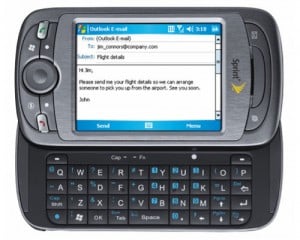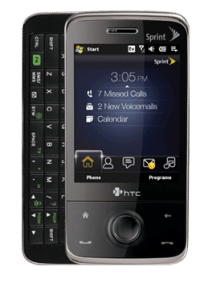I’ve shared my favorite desktop apps and tools several times, now it’s time to discuss a device that is more intimate in nature. It’s hard to overstate the significance of the object that is so ubiquitous. For many, it is the first thing we see when we wake up, and the last thing we see when we go to sleep. It’s in our possion more than any other item. It knows every person you communicate with, everywhere you go, and for most of us, every other item you purchase.
Before I dive into what I use today, let’s take a brief look at the tech that’s lived in my pockets over the past seven years.
The Beginning …of an obsession
I’ve used Windows Mobile phones for the better part of a decade, beginning with the Siemens SX-66. It was a fantastic phone because it was one of a kind, providing the only full mobile experience on the market. I upgraded about every 10 months for years, eventually to the HTC Mogul, which really ruined my experience. It was horribly slow, not even able to keep up with typing a text message, let alone browsing the web. Then I purchased the HTC TouchPro. It was far faster, but by that time, the iPhone was out and there was no more denying it: Windows Mobile was old news. When I was granted a “technology assurance” upgrade to the TouchPro 2, I enjoyed the larger screen, but the underlying OS was still dated. After experimenting with custom ROMs – tweaked versions of the operating system distributed by enthusiasts – I was still left unsatisfied with the performance and experience.
So I began looking into alternatives, it’s no secret that Apple’s phone caught my eye. I’ve always admired the iPhone’s success. Sleek, fast, productive, and capable. It just worked. The only thing holding me back from purchasing it was the network. Sure I would toss around excuses about being locked into a closed system, but it always came back to the provider for me. I’m sure Sprint enjoys having at least one loyal customer.
Some competition
When Sprint announced the HTC Evo 4G, I was captivated. The dozens of awesome reviews of the Evo speak for themselves, and the Evo quickly become the benchmark to beat. Meanwhile, Android momentum surged and began (and is still) out pacing activations of all iPhones. Much like Windows Mobile, the differentiated hardware running the Android system provided choice for consumers while maintaining a common experience and ecosystem for apps.
Adjusting to Android
You can see above that I enjoyed tactile keyboards, and I thought I’d have a hard time adapting to an on-screen version. I quickly realized however that it truly is a non-issue. The virtual typing pad is self-correcting, but most of the time you can avoid it altogether and just use your voice to call anyone (even if they’re not in your address book, Google will find the number for you and place the call), dictate an email to your team, set your alarm clock, run a search, play music, or more. And if you do enjoy the keyboard, there are great add-ons like the much touted Swype or SwiftKey keyboards.
Although Apple fanboys will tell you that their store contains more apps, the plethora of apps available for the Android is more than enough to satiate even the hungriest tech diets. Many of these programs are nearly desktop quality, such as Google Earth with full 3D capabilities, and the vast majority are available for free.
Suffice it to say that Android has really won me over so far. It will be interesting to see how enticing the new generation of Windows Phones will be and how they will compare to the app-centric model created by Apple and dominated by Google.




